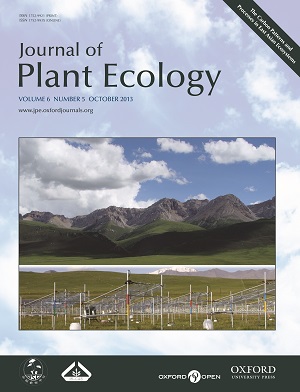Current Issue
-
 Volume 6 Issue 5
Volume 6 Issue 5
The alpine grassland landscape of the Tibetan Plateau. The inset below shows the large-scale Warming-by-Precipitation Experiment at the Haibei Alpine Grassland Ecosystem Research Station of Chinese Academy of Sciences (101o12'E, 37o70'N, 3200 m a.s.l.) by Jin-Sheng He and his colleagues. Photo Credit: Jin-Sheng He.
IF: 3.9
CiteScore: 5.7
CiteScore: 5.7
Editors-in-Chief
Yuanhe Yang
Bernhard Schmid
Yuanhe Yang
Bernhard Schmid
CN 10-1172/Q
ISSN 1752-9921(print)
ISSN 1752-993X(online)
ISSN 1752-9921(print)
ISSN 1752-993X(online)







